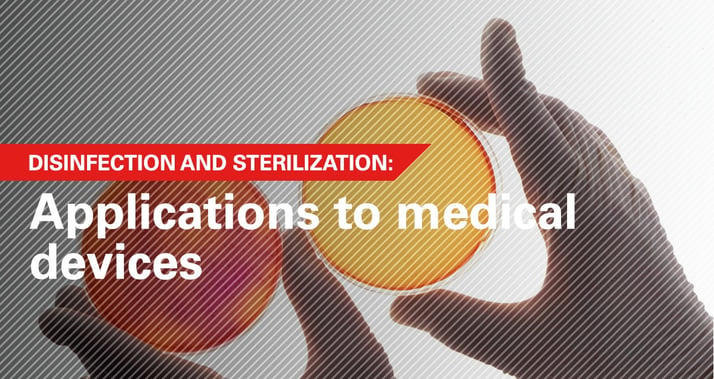
The proper cleaning and disinfection of medical devices and associated surfaces is important to reducing the risk for cross contamination and also the spread of Healthcare Associated Infections (HAIs). Commonly, terms related to cleaning and disinfection are used synonymously when in reality they have very different meanings. Cleaning is the physical removal of bioburden from an environmental surface or medical device. Cleaning does not destroy or inactive microorganisms. Disinfection, on the other hand, is the chemical inactivation of microorganisms (certain bacteria and viruses) using a germicide or other method. Dr. Earl Spaulding, an expert in disinfection, established a classification system for medical devices that defines the level of disinfection required for various types of devices. There are three main categories of medical devices:
- Noncritical Items: Noncritical items are those that come in contact only with intact skin and do not enter sterile body cavities or mucous membranes. Common examples of noncritical items include blood glucose meters, stethoscopes, and blood pressure cuffs. These items require a minimum of a low level disinfection process.
- Semicritical Items: Semicritical items are those that come in contact with mucous membranes, but not sterile body cavities. Common examples of semi-critical items include endoscopes, speculums, and ear/nose/throat instruments used for office procedures. These items require high level disinfection process.
- Critical Items: Critical items are those that come in contact with sterile body cavities. Common examples include surgical instruments, needles, syringes, and surgical implants. These items require sterilization.
There are multiple levels of disinfection processes which include:
- Low Level Disinfection: Low level disinfection is the minimum requirement for noncritical items and inactivates most bacteria (gram positive and gram negative) and most viruses (enveloped and nonenveloped).
- Intermediate Level Disinfection: Intermediate level disinfection is commonly used to disinfect noncritical devices and items and is effective against a wide variety of bacteria, viruses, Mycobacteria, bloodborne pathogens, multidrug resistant organisms, and some bacterial spores (i.e. Clostridium difficile).
- High Level Disinfection: High level disinfection is used to disinfect semicritical items such as endoscopes and other devices used that come in contact with mucous membranes. High level disinfection is effective against all of the organisms inactivated by low and intermediate level disinfectants, but also more resistant pathogens and additional bacterial spores.
For more information, visit the CDC Healthcare Infection Control Practices Advisory Committee, www.cdc.gov/hai.
Author:
- Hudson Garrett Jr., PhD, MSN, MPH, FNP-BC, PLNC, VA-BC, IP-BC, FACDONA
Global Chief Clinical Officer
Pentax Medical
BL-IPC007
